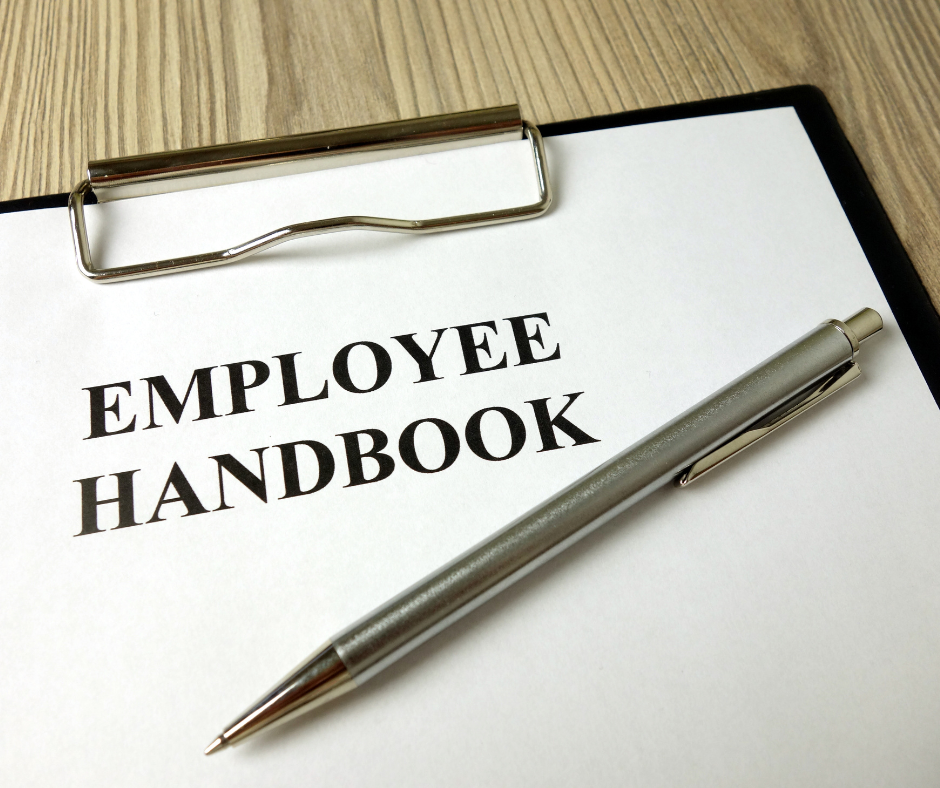
Key Takeaway:
- Employee handbooks are crucial for Plastics and Rubber Products Manufacturing companies as they provide guidance and structure for employees, while outlining the company’s values, policies, and procedures.
- Looking to create employee handbooks for computer and electronic product manufacturing companies? Here are some key things to include: company background, mission statement, workplace policies, benefits and compensation information, employee code of conduct and ethics, safety and emergency procedures, attendance and time-off policies, among other things.
- Updating and communicating the employee handbook must be done regularly to ensure legal compliance and consistency across the board, and obtaining employee signatures and acknowledgements is key to ensuring that everyone is aware of and will follow the established policies and procedures.
Are you a leather and allied product manufacturing company looking to create a comprehensive and effective employee handbook? This article will provide you with tips and best practices to create and utilize an employee handbook that works for your company.

Importance of Employee Handbooks in Leather and Allied Product Manufacturing Companies
Employee Handbooks: A Necessary Tool for Effective Management in Leather and Allied Product Manufacturing Industry In today’s competitive business world, employee handbooks are seen as essential tools for communication and managing expectations. The importance of employee handbooks cannot be overstated for Miscellaneous Store Retailers companies. They serve as a guide for employees, outlining the company’s policies and procedures, standards of conduct, safety guidelines, and benefits. Check out this helpful resource on creating effective employee handbooks for your business. Employee handbooks for Leather and Allied Product Manufacturing companies are an effective way to ensure uniformity in communication, prevent misunderstandings, and build trust between management and employees. The handbooks help employees understand their roles, responsibilities, and expectations of their job. By doing so, they help to establish a clear and concise chain of command, which ultimately leads to better decision-making and effective management.
Moreover, these handbooks enhance workplace safety and security by providing guidelines on safe work practices, emergency procedures, and equipment use. They also communicate the consequences of non-compliance or violation of any company policies or procedures, ensuring that employees are aware of the consequences of their actions.
In addition, employee handbooks for Leather and Allied Product Manufacturing companies can be used as a tool for employee recruitment and retention. The handbooks clearly outline the company’s expectations and enable potential employees to understand the working environment and culture of the organization before accepting a position.
Furthermore, history has shown that many companies have faced lawsuits due to the absence of proper guidelines, policies, or procedures. Employee handbooks act as legal protection and provide guidelines for potential legal disputes, creating a fair platform for resolution.

Content for Employee Handbooks
Employee Handbooks play a crucial role in setting an organized and comprehensive work culture in Leather and Allied Product Manufacturing companies. The handbook must provide detailed information on policies, procedures, job descriptions, and benefits, including wages, leaves, and insurance. Emphasizing employee expectations and their rights is equally important and must be clearly communicated in a professional tone. Effective communication about company culture, safety protocols, and ethical behavior should also be highlighted in the handbook. It is recommended to incorporate interactive employee training programs and assessments to ensure that the handbook policies are well understood. Check out this article for more information on creating employee handbooks for clothing and clothing accessories stores companies. To further support employee engagement and retention, highlighting company values and mission statement in the handbook can significantly impact a positive work environment. These details can encourage employees to identify with the company’s goals and work towards a common vision.
It is interesting to note that employee handbooks for truck transportation companies have a rich history that can be traced back to the early 20th century. They were initially used as contracts to specify work arrangements, hours, and wages, but now serve as a comprehensive guidebook for employees. Continued engagement and updates to the handbook are necessary to ensure that the work culture is always aligned with the company’s vision.

Updating and Communicating the Employee Handbook
To ensure the efficiency and compliance of the workforce, it is essential for Leather and Allied Product Manufacturing companies to maintain an updated employee handbook. Regularly reviewing and revising the policies in accordance with the legal and organizational changes is crucial for the handbook’s relevance. After the modifications, the dissemination of the latest version to every employee must be ensured.
To incorporate changes into the employee handbook, the HR department must collaborate with legal counsel and industry experts to ensure compliance and relevance. The revisions must be clearly documented and communicated to all employees. Various channels can be used for disseminating the handbook, such as email, the company intranet, or in-person meetings. Besides, it is imperative to provide training and explain the changes to avoid confusion and promote adherence. In addition to updating and communicating the handbook, companies should also consider collecting feedback from employees regularly. Surveys or focus groups can be conducted to gather suggestions and concerns about the handbook. It promotes employee participation and ensures that the employee handbooks for furniture and related product manufacturing companies align with their needs and expectations.
Five Facts About Employee Handbooks for Leather and Allied Product Manufacturing Companies:
- There are several reasons why creating employee handbooks for information companies is essential. These handbooks outline company policies, expectations, and guidelines and serve as a valuable resource for employees. It can also help in maintaining consistency and fairness in the workplace. According to the HR Daily Advisor, employee handbooks are a crucial component of successful information companies. So, it is important for companies in the leather and allied product manufacturing industry to create effective handbooks for their employees.
- Employee handbooks should include information on safety procedures, workplace harassment policies, and employee benefits. Employee handbooks are important for various industries, including leather and allied product manufacturing companies and health and personal care stores companies. (Source: Chron)
- “Employee handbooks are useful tools for onboarding new employees and setting clear expectations from the start. (Source: Glassdoor)
\nIf you work in the leather and allied product manufacturing industry, you may want to check out some useful tips on creating employee handbooks for merchant wholesalers, durable goods companies, and more.
- Employee handbooks for General Merchandise Stores Companies should include information on specific safety hazards associated with the work environment. It is important for employees to be aware of potential risks and how to prevent accidents. (Source: Airmason)
- Employee handbooks should be regularly updated to reflect changes in company policies and state and federal labor laws. (Source: Small Business Trends)
FAQs about Employee Handbooks For Leather And Allied Product Manufacturing Companies
What are employee handbooks for Leather and Allied Product Manufacturing companies?
Employee handbooks for leather and allied product manufacturing companies are documents outlining the policies, procedures, and guidelines that apply to employees in these industries. They typically cover topics such as workplace safety, employee benefits, HR policies, and legal compliance.
What are the benefits of having employee handbooks for Leather and Allied Product Manufacturing companies?
The benefits of having employee handbooks for leather and allied product manufacturing companies can provide numerous benefits, such as ensuring consistent policies and procedures across the organization, reducing legal risks, improving employee morale and productivity, and establishing clear expectations and guidelines for employees.
What should be included in an employee handbook for Leather and Allied Product Manufacturing companies?
An employee handbook for leather and allied product manufacturing companies should include important information such as the company’s mission, vision, and values, employee benefits, compensation policies, vacation and paid leave policies, employee conduct and disciplinary procedures, safety guidelines, and other relevant policies and procedures.
How should an employee handbook for Leather and Allied Product Manufacturing companies be distributed to employees?
Employee handbook for leather and allied product manufacturing companies should be distributed to employees either in hard copy or electronically. Employees should receive a copy upon being hired and sign an acknowledgement that they have read and understood the policies outlined in the handbook. Updates to the handbook should also be distributed in a timely manner.
What are some top tips for creating an effective employee handbook for Leather and Allied Product Manufacturing companies?
Some top tips for creating an effective employee handbook for leather and allied product manufacturing companies are to keep the language clear and concise, ensure that policies and procedures are compliant with all relevant laws and regulations, involve employees in the creation process, and regularly update the handbook as necessary.